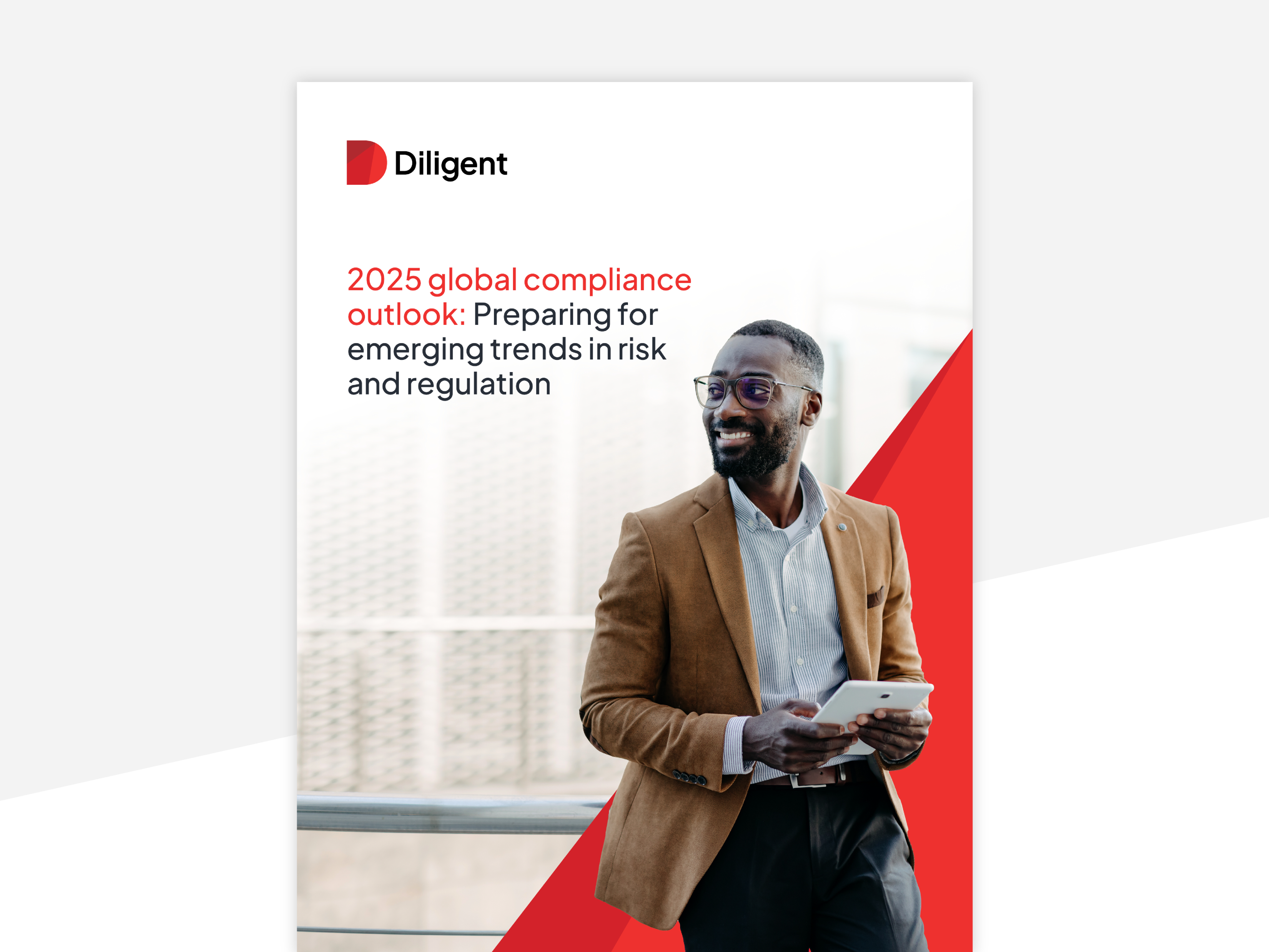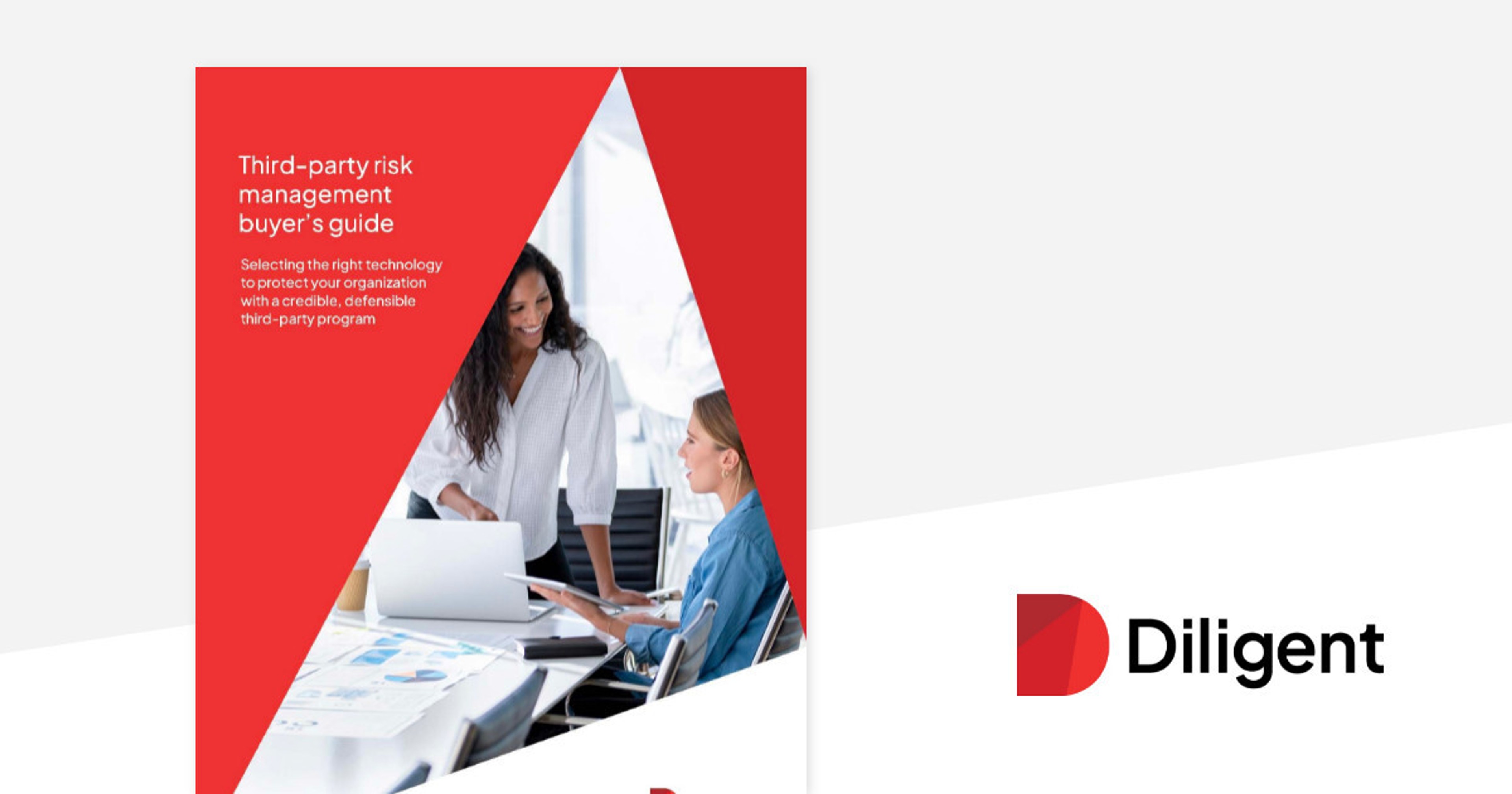Stay ahead of change: Building compliance resilience amid shifting regulations

Companies today rely heavily on third parties to drive efficiency, access new skills and technologies and enhance products. This reliance has escalated recently, and while these partnerships bring numerous advantages, they also expose businesses to a range of risks, including cyber threats, supply chain disruptions and environmental, social, and governance (ESG) concerns.
Navigating these risks is essential for building a resilient, sustainable and ethical business ecosystem. The expanding regulatory landscape has made third-party risk management a critical focus for organizations.
No longer limited to anti-bribery compliance, today’s third-party risk management must encompass a range of evolving regulatory concerns, including forced labor, sanctions and ESG issues, as discussed in our 2025 global compliance outlook.
Given these factors, compliance and legal teams face significant challenges — and the stakes are high. Just one vendor misstep, oversight or incident can jeopardize compliance, tarnish an organization’s reputation and negatively impact performance.
Now more than ever, organizations need the right tools to ensure they’re properly managing, monitoring and training their third-party resources. Here, we examine the current state of third-party risk, discussing new compliance expectations and core challenges, with actionable best practices for companies seeking to strengthen their approach. Through a proactive, risk-based strategy and cross-functional collaboration, organizations can better manage third-party risks while supporting sustainable and ethical business practices.
Key regulatory trends impacting third-party risk management
The landscape of third-party risk management is being reshaped by a series of key regulatory trends, driven largely by an increased emphasis on ethical practices, transparency and comprehensive risk assessment. Regulatory authorities worldwide are instituting new standards that require businesses to adapt their compliance strategies.
As regulations expand, companies are urged to proactively align their operations with these evolving expectations. So, what are the critical regulatory trends that are shaping the future of third-party risk management? And how can organizations effectively navigate this complex regulatory environment?
Expanding sanctions and forced labor compliance
Regulatory authorities worldwide are increasingly focused on enforcing compliance related to forced labor and sanctions. In the U.S., the Uyghur Forced Labor Prevention Act (UFLPA) has implemented a presumption that goods sourced from the Xinjiang region of China involve forced labor. This places the burden of proof on companies, compelling them to demonstrate the absence of forced labor throughout their supply chains. Meanwhile, the European Union is expected to adopt similar forced labor restrictions, creating a unified push across jurisdictions that requires companies to engage in human rights due diligence with more rigor than ever before.
These developments underscore a broader shift: regulatory authorities are no longer satisfied with baseline compliance. In a recent episode of The Corporate Director Podcast, guest Dr. Hemma Lomax, Founder, CEO and Chief Compliance Coach stressed that companies must now proactively demonstrate their commitment to ethical sourcing and transparency in their supply chains. To stay compliant, businesses need to integrate human rights due diligence processes that not only meet legal requirements but also mitigate reputational risks.
Evolving risks in AI, cybersecurity and ESG
Beyond traditional areas of compliance, regulatory bodies are introducing guidelines that address emerging risks in AI, cybersecurity and ESG. For example, recent updates to the Department of Justice’s (DOJ) Evaluation of Corporate Compliance Programs (ECCP) include provisions on AI, underscoring the government’s attention to responsible technology use in compliance contexts.
Similarly, ESG factors — particularly in Europe — are becoming a regulatory focus, requiring companies to monitor and report on environmental and social risks within their third-party networks. These new areas demand that compliance programs broaden their scope to include metrics on ethical practices and data security, making them integral to third-party risk management.
See beyond the compliance checklist
Download our '2025 global compliance outlook' and transform regulatory challenges into rewarding opportunities with expert guidance and actionable tips.
Get the guideChallenges in third-party risk management
Data-driven expectations and continuous monitoring
As regulations evolve, data-driven monitoring and continuous assessment have become core expectations in third-party risk management. Regulatory authorities are moving away from static, point-in-time evaluations, favoring an approach that emphasizes ongoing oversight.
This shift is driven by the increasing availability of data that enables more frequent assessments, allowing companies to identify and address potential risks in real time. However, while more data is available, companies must manage the complexity of processing this information effectively, translating it into actionable insights for meaningful compliance efforts.
Global consistency in compliance
For multinational companies, the challenge of maintaining consistent compliance across varying jurisdictions is substantial. Regulatory requirements differ significantly from one region to another, particularly in areas such as forced labor and ESG.
This requires compliance programs that can adapt to these differences while upholding a unified global strategy. The challenge lies in developing systems that can flexibly meet local regulatory demands without compromising the overall cohesion of the organization’s compliance framework.
Resource allocation and stakeholder engagement
Building a robust third-party risk management program demands considerable resources, and resource constraints are a common concern, particularly for mid-sized or smaller companies.
A successful compliance program relies on stakeholder engagement across departments, from finance to IT, to achieve the necessary scope and depth of compliance. By fostering collaboration, companies can build cross-functional support for third-party compliance initiatives, mitigating the strain on any single department and creating a more sustainable program.
3 best practices for third-party risk management
1. Implement a tiered, risk-based approach
A risk-based approach enables organizations to allocate compliance resources more effectively, targeting higher levels of due diligence to high-risk third parties while applying lighter oversight to lower-risk entities. By implementing tiered risk assessments, companies can ensure that third-party oversight aligns with each vendor's specific risk profile, optimizing resources while enhancing program efficacy. For high-risk third parties, additional safeguards such as contractual clauses, enhanced audit rights and reporting requirements may be necessary to ensure compliance. Meanwhile, lower-risk entities may only need periodic assessments or self-attestation.
The DOJ’s latest guidance emphasizes that compliance programs should balance thoroughness with business practicality, aiming to prevent bottlenecks that could hinder operations. A tiered approach fulfills this by enabling a flexible, efficient response to risk without compromising the program’s effectiveness.
Navigate compliance with confidence
Download our buyer's guide now and learn how to choose and integrate the right software for seamless third-party management.
Download here2. Engage stakeholders on sustainable compliance
For a compliance program to be effective, companies must cultivate buy-in across functions. Achieving sustainable compliance requires stakeholder support at all levels, from executives to operational staff. Compliance teams must demonstrate the value of risk management efforts in protecting the business’s reputation and meeting regulatory requirements. By positioning compliance as a strategic business imperative, companies can foster a culture that supports cross-functional collaboration and emphasizes the importance of third-party compliance.
3. Build an integrated compliance program
An integrated compliance program is essential for effective third-party risk management. Integration allows for centralized oversight and collaboration across key departments, such as legal, finance and IT, facilitating a cohesive approach to third-party due diligence. Ideally, this includes a centralized technology solution that connects disparate systems via APIs, creating a unified platform for assessing third-party risks in real time.
Although such an integrated system may be resource-intensive, companies can begin with incremental improvements, such as automating basic processes or creating cross-functional compliance teams. Even small steps toward integration can improve program efficiency and increase alignment between departments, contributing to a more proactive compliance posture.
Future outlook: Preparing for 2025 and beyond
Anticipating global regulatory expansion
The global regulatory environment for third-party risk management is likely to grow more stringent, particularly in areas such as forced labor and ESG. With increased focus on human rights and environmental impact, regulatory bodies are developing more cohesive international frameworks that push for transparency across supply chains. Companies should prepare for these anticipated developments by investing in compliance resources and ensuring that their programs can scale to meet expanded requirements.
Capacity building and resource allocation
As regulatory complexity increases, organizations must allocate sufficient resources to sustain a comprehensive third-party risk management program. Compliance teams should prioritize capacity building, focusing on areas with the highest regulatory and reputational impact. By demonstrating the cost of non-compliance — whether through financial penalties or lost business opportunities — compliance officers can secure the resources needed to meet expanding expectations.
The evolving role of compliance officers
The compliance professional’s role is evolving to require both technical expertise and strong interpersonal skills. Data management, regulatory interpretation and risk assessment are becoming essential competencies, alongside the ability to influence and motivate stakeholders. In the future, compliance officers will not only need to understand complex regulatory frameworks but also navigate cross-functional relationships to drive effective compliance strategies. This multifaceted skill set will position compliance officers as key contributors to sustainable business practices.
Leverage technology for enhanced third-party risk management
While AI can enhance the efficiency of third-party risk management by automating data collection and analysis, companies should approach these tools as complements to their compliance programs rather than as stand-alone solutions.
AI technology is particularly useful in sifting through large data sets to identify potential red flags, but it is most effective when integrated with human oversight and ethical controls. Thus, AI can support compliance efforts without overshadowing the human expertise essential to effective risk management.
Advanced monitoring and verification tools
Technological advancements, such as isotopic testing, have introduced new methods for verifying the origins of materials, significantly increasing the burden of proof on companies to ensure compliance in complex supply chains. Isotopic analysis has been applied to materials like cotton and timber, enabling companies to precisely trace these goods back to their source regions and confirm compliance with forced labor regulations.
While these tools are still emerging, they offer promising capabilities for companies with intricate supply networks. As these technologies become more accessible, they can serve as valuable additions to compliance programs, providing detailed verification data that regulators are increasingly expecting, yet without supplanting broader compliance structures.
Take the next step in your compliance journey
The third-party risk landscape is increasingly complex, with heightened regulatory expectations around sanctions, forced labor, and ESG issues. By adopting a proactive, risk-based approach and integrating compliance across functions, companies can meet these evolving challenges head-on.
Diligent’s AI-powered due diligence reports offer organizations easy access to comprehensive third-party assessments, designed to meet growing regulatory demands and the complexities of modern supply chains. These reports enable more efficient decision-making for chief compliance officers, general counsel and other risk professionals who are balancing resource constraints and increased compliance burdens.
Compliance programs need to be timely, practical and proactive. As Kristy Grant-Hart mentioned in a recent Diligent webinar, “If processes are so strong that they become a barrier to business, that’s a problem. The key is finding the balance where compliance supports the business without compromising on risk mitigation.”
By leveraging Diligent’s AI-powered due diligence reports and third-party risk management tools, organizations can navigate the complexities of modern supply chains and regulatory environments with confidence, ensuring that their compliance efforts are both effective and efficient.
Get even more insights into the 2025 compliance landscape
Stay ahead of 2025’s compliance complexities with our global compliance outlook. Crafted by thought leaders like Dr. Hemma Lomax and Kristy Grant-Hart, you’ll gain a comprehensive view of the latest regulations in cybersecurity, AI, supply chain management, sustainability and enforcement.
Discover actionable strategies and expert insights to help your organization stay ahead of the curve, build robust governance frameworks and implement proactive risk management.
Future-proof your compliance strategy. Download our guide today.
Keep exploring

2025 global compliance outlook
Download our 2025 global compliance outlook to confidently navigate complex regulations, enhance risk management and secure your company's future.

Third-party risk management buyer's guide
Effective third-party management is not optional. Compliance expert Kristy-Grant Hart breaks down what you need to look for in a 3PM solution.

Reprioritizing Your Third-Party Risk Management Program — Risk Mitigation
Get key insights into navigating third-party risk management and how to proactively mitigate noncompliance risks.

